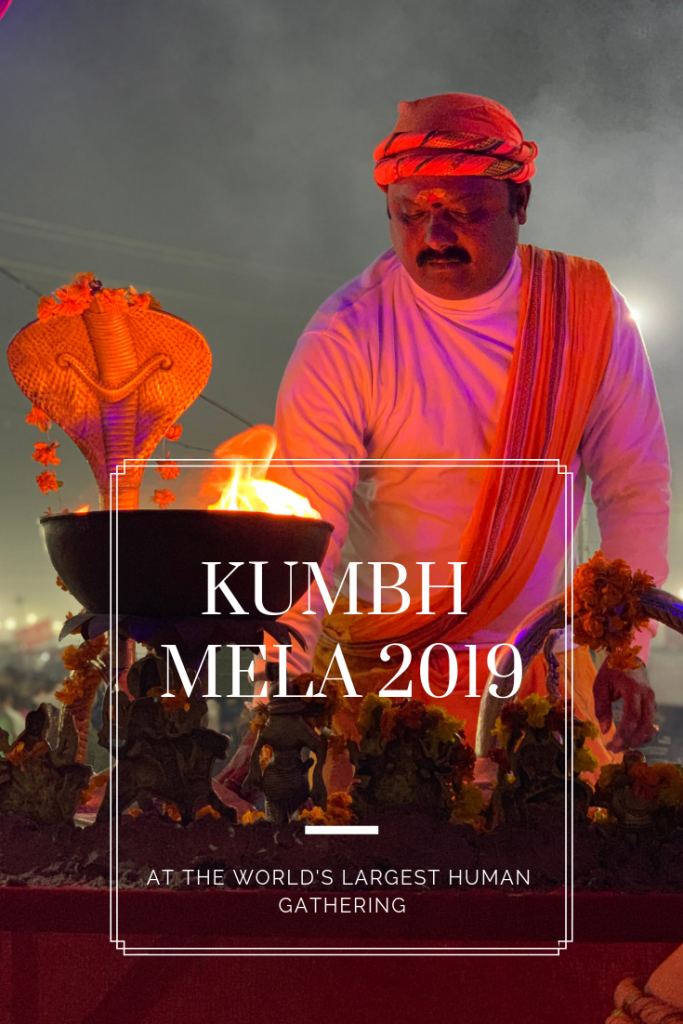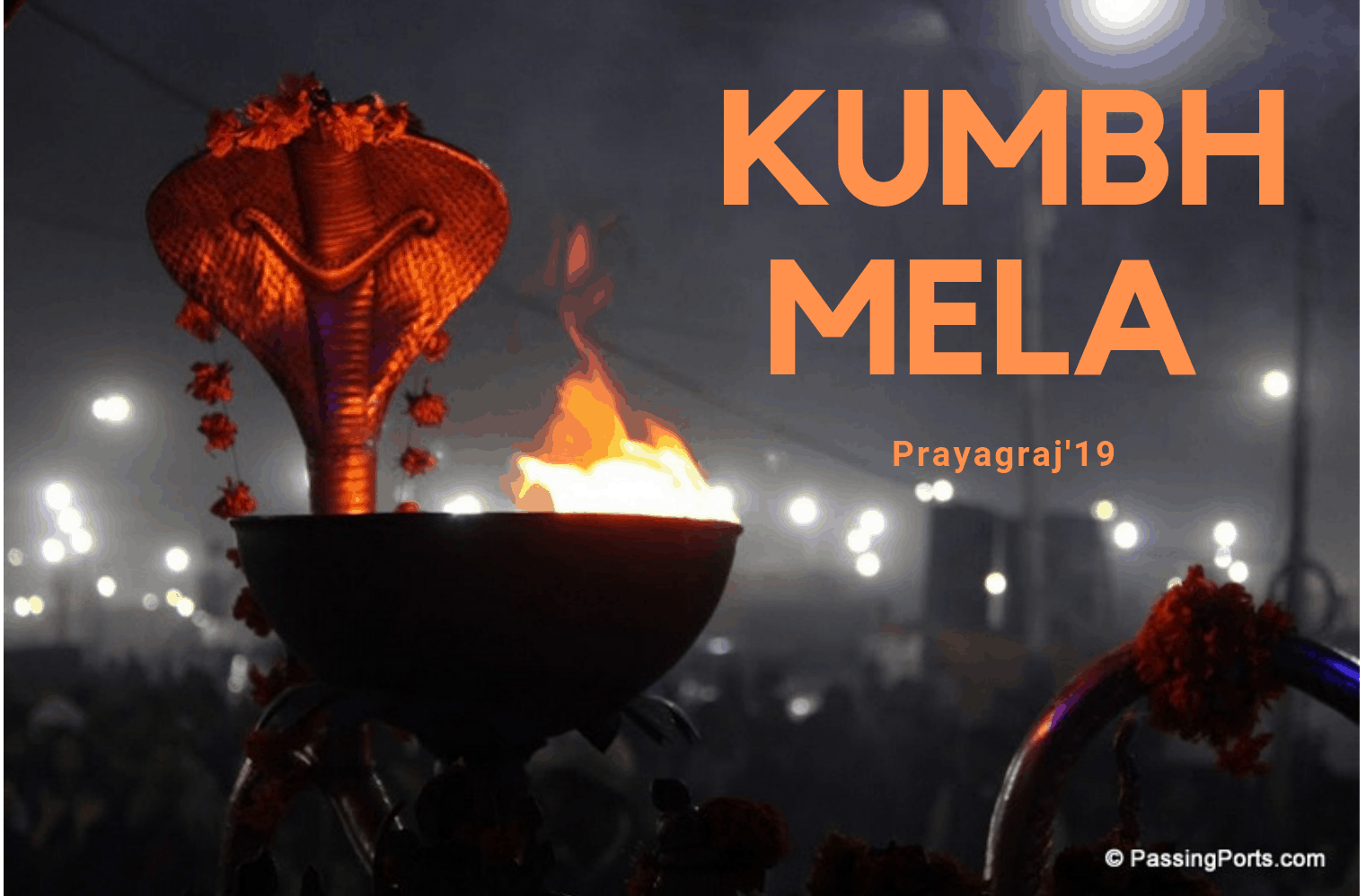Preethika and I had to attend two weddings in February, one in Nagpur and the other in Lucknow with a gap of two days in between. We were contemplating a trip to Tadoba to watch the magnificent tigers in their natural habitat when Preethika mentioned perchance that the Kumbh Mela at Prayagraj (earlier known as Allahabad) was taking place at that time, and perhaps we should head there during the two free days and in no time our plans were frozen. It feels now that we were destined to attend the Kumbh Mela 2019.
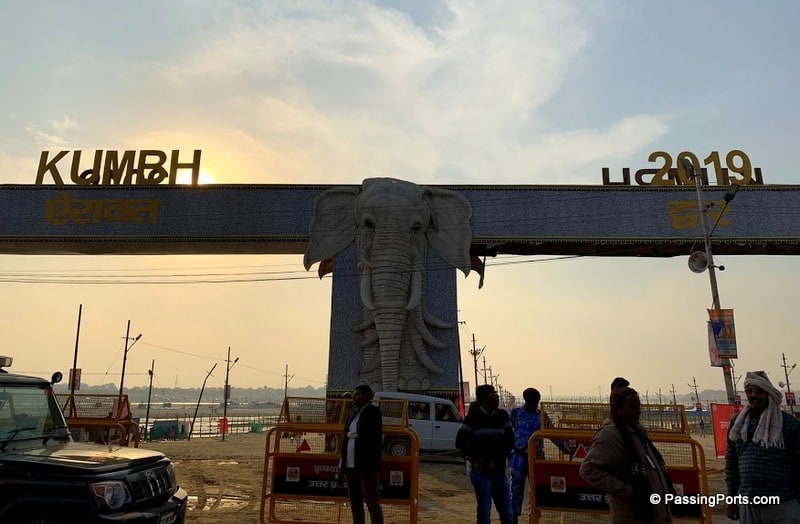
For those who aren’t aware, the Kumbh Mela is the world’s largest gathering of people, and it has been taking place for centuries now. The origin of the Kumbh Mela has multiple stories, but the fact that a congregation such as this, comprising of people from all walks of life to the elusive Naga Sadhus is something that caught our attention, and perhaps the reason why we chose the Kumbh Mela 2019 over the tigers of Tadoba. The deciding factor was that this event doesn’t take place every year. Until now, we had to be happy with just reading about it in the newspapers and blogs, but here was our chance to experience this first hand and learn more about the Kumbh Mela! It goes without saying that we took the opportunity with both hands 🙂
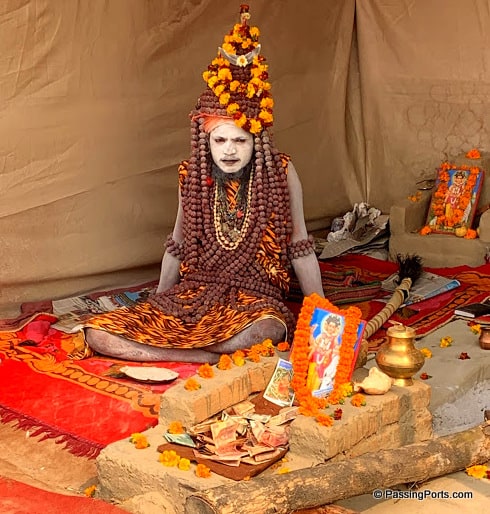
How did the Kumbh Mela come into existence?
“Kumbh” or “Kumbha” means pot or pitcher in Sanskrit. It also pertains to Aquarius in the Zodiac calendar.
The legend of Samudra Manthan talks of a battle between the Devas (benevolent deities) and Asuras (malevolent demigods) for amrita, the nectar drink of immortality. During the churning, amrita was produced and placed in a Kumbha. To prevent the asuras from seizing the amrita, Lord Vishnu (or if you are reading one of the variations, it would be Dhanvantari, Garuda, Indra or Mohini) is said to have taken away the pot to safeguard from the asuras. During this flight, it is said to have spilled in four different places on earth, thus being the four different places where the Kumbh Mela is celebrated.

The Kumbh Mela takes place every 12 years, to signify the duration of the war between the Devas and the Asuras. It is considered sacred to take a dip in the river where the Kumbh Mela is taking place, since the belief is that our sins get washed away with the dip in the holy waters.
So which are the four places where Kumbh is celebrated?
While a lot of places and events call themselves Kumbh Melas, following are the four places which have been traditionally considered as Kumbh Melas.
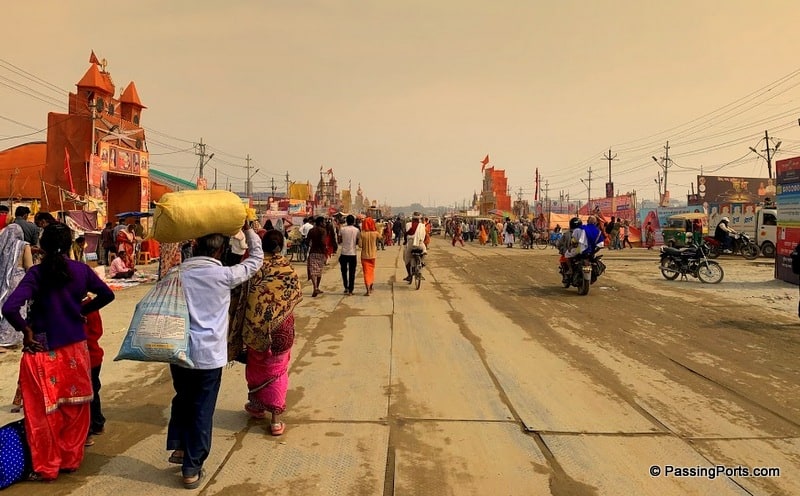
- Prayagraj/Allahabad – At the confluence of the mighty Ganges/Ganga, Yamuna and the Saraswathi rivers. This is the oldest, holiest, most prominent and most attended of Kumbh Melas. We were indeed blessed to have been able to attend this Kumbh Mela last week.
- Haridwar – By the banks of the Ganges/Ganga. The next Kumbh Mela will be conducted here in 2022. There is also some discussion on advancing it to 2021.
- Ujjain – By the banks of the river Shipra
- Trimbak-Nashik – By the banks of the river Godavari. Originally, the Kumbh Mela was conducted in Trimbak until 1789 when there was a big clash between the Shaivaites and the Vaishnavites due to which the presiding Maratha ruler changed the location to Nashik. The Shaivaites still consider Trimbak to be the right location for Kumbh Mela
What are the different types of Kumbh Mela?
- The Maha Kumbh Mela, which occurs after 12 Purna Kumbh Melas that is every 144 years. The Kumbh Mela in Prayagraj in 2013 was a Maha Kumbh Mela
- Kumbh Mela, which is also called as Purna Kumbh Mela, takes place every 12 years at a given site. Kumbh Mela at Prayagraj is celebrated approximately 3 years after Kumbh at Haridwar and 3 years before Kumbh at Nashik and Ujjain (both of which are celebrated in the same year or one year apart).
- Ardh Kumbh (“Half Kumbh”) Mela takes place every 6 years between two Purna Kumbha Melas at Prayagraj and Haridwar.
How does one reach Allahabad/Prayagraj to attend the Kumbh Mela?
Prayagraj is accessible by air, rail and buses. We flew into Prayagraj from Nagpur and while leaving, took the train to Lucknow.
Kumbh Mela in a day. What do we prioritise on?
This is the same predicament we were in. Instead of narrating what we did, now having been there, let me tell you what you ought to be doing.
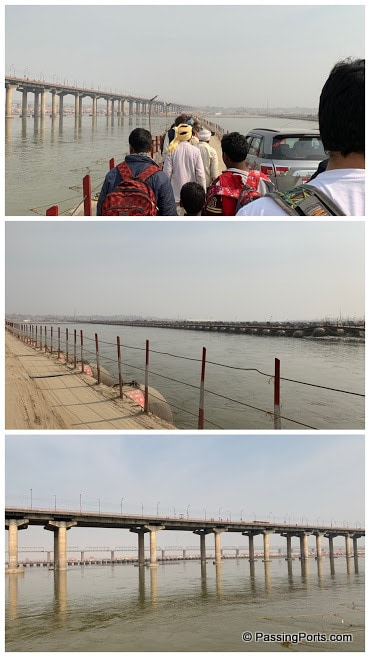
- Visit the important Akharas/Akhadas of the Naga Sadhus: While there are 14 akharas in all, restrict yourself to 3 or 4. Juna Akhara is the largest and oldest akhada and is a must see. Visit them first, look around, talk to the sadhus, take their blessings and then move on to Niranjani Akhara and the Mahanirvani Akhara. The fourth, if you have time to spare would be the Kinnar Akhara or an Akhara for the transgenders. This is the first time they are a part of the Kumbh Mela.
- Take a dip in the Ganges, or if possible, at the Sangam: This one is a no brainer. According to Hinduism, it is said that a dip in the holy waters will get rid of all the sins you have accumulated until now. Again, if you have time to spare, taking a dip at the Sangam (confluence of the three holy rivers – the Ganga, Yamuna and Saraswathi) would be ideal.
- Watch the Aarti at the banks of the Ganga or Yamuna: We were lucky to have seen the aarti, given that we tried to do as much as possible on that day. It is a beautiful sight with thousands of people praying while the priests are doing pooja to the River Gods.

Who are these Naga Sadhus?
The word Naga means mountains in Sanskrit. Naga Sadhus are essentially Sadhus from the Himalayas who come down to the plains during the Kumbh Mela for the Shahi Snans.
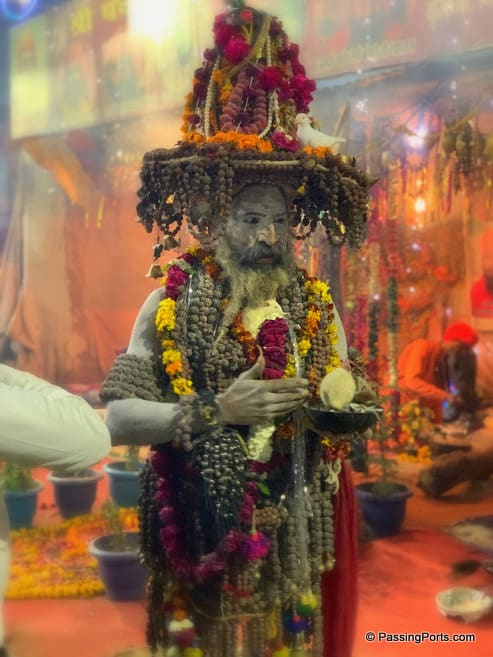
Naga Sadhus are followers of Lord Shiva, and they are traced as far back as the coins found in Mohenjo-
The Naga Sadhus are unmissable during the Kumbh Mela, with their long hair, ash spread all over their bodies and dressed with little to nothing but for rudraksha beads.
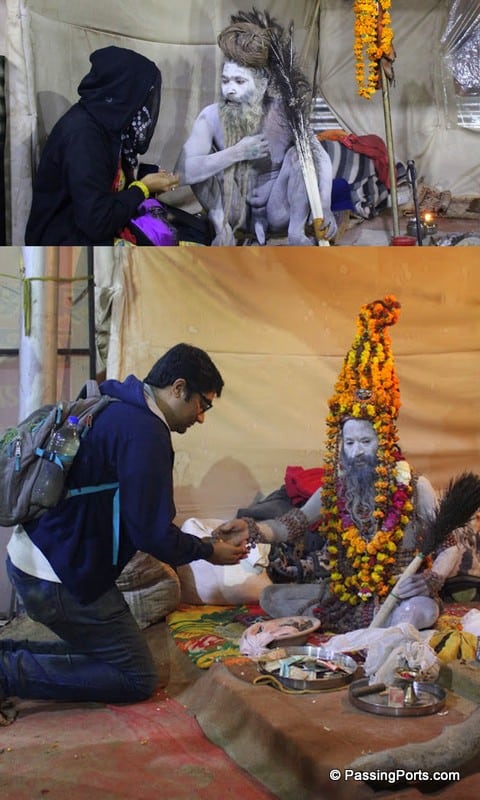
Some say Naga Sadhus are warriors, a clan formed by Adi Shankaracharya to fight against the Muslim invaders, but this cannot be verified.
How does one get around the Kumbh Mela?
If you have the time, then you could walk around. Else, you will find a multitude of battery operated autos and taxis that you can take from one place to the other. We did a combination of the two, and in spite of walking 10+ kilometres that day, we also ended up spending a bomb on the autos and taxis.
Is it too late to attend the Kumbh Mela this year?
Absolutely not. It runs until March 4th this year. In fact, attending the Kumbh Mela during Shivaratri is considered quite important.
Now, have you started packing your bags already? 🙂
Pin Kumbh Mela for later:

